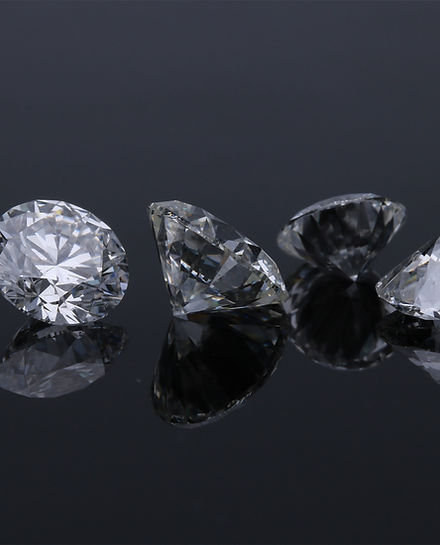

Chemical Vapour Disposition (CVD)
Ever wondered about the the process that had to take place so that we can adorn ourselves with lab grown diamonds?
Chemical vapour disposition (CVD) is the most modern and advanced method used to produce lab-grown diamonds by depositing carbon atoms onto a substrate under controlled conditions. The process begins with a gas mixture containing carbon-containing gases, such as methane (CH₄), hydrogen (H₂), and sometimes other gases like nitrogen (N₂). We also need a substrate, what we informally refer to as the seed.
The gases are activated using energy sources such as microwaves, lasers, or hot filament heaters. This activation breaks down the molecular bonds within the gases, releasing carbon atoms.
The activated carbon atoms are then deposited onto the substrate surface, layer by layer. This occurs at temperatures typically ranging from 700°C to 1200°C (depending on the specific CVD method and desired diamond characteristics). As carbon atoms settle on the substrate, they gradually form a crystalline structure, identical to that of a mined diamond. This is the key reason why we call it lab-grown as the carbon atoms are being layered over the seed to make it grow.
The growth process is carefully controlled to ensure uniformity and quality of the diamond layer. Factors such as gas composition, temperature, pressure, and deposition time are precisely managed to achieve desired diamond properties.
THE HISTORY OF LAB GROWN DIAMONDS
In the 1950s, scientists began experimenting with creating diamonds in laboratories using high pressure, high temperature (HPHT) processes. General Electric (GE) became a pioneer in this field, successfully producing small, gem-quality diamonds in 1954 through their HPHT method.
In the 1980s, companies like Gemesis began focusing on producing gem-quality lab-grown diamonds for jewelry purposes using HPHT technology. By the late 1990s, lab-grown diamonds started appearing in the jewelry market, primarily as small accent stones or in industrial applications.
In the early 2000s, technology continued to evolve, with advancements in both HPHT and chemical vapor deposition (CVD) methods. CVD technology emerged as a viable alternative to HPHT, offering more control over the diamond growth process and enabling the production of larger, high-quality diamonds. At present, major jewellery retailers and brands started offering lab-grown diamonds alongside mined diamonds, recognizing their growing popularity and market demand.

At Elaara Diamonds, we carefully hand pick our CVD lab-grown diamonds and the lab which we procure them from, ensuring that it meets our highest standards. ALL of our certified lab-grown diamonds are of exceptional quality; we only carry the TOP 2 grades in terms of clarity and colour. To stay true to our value of being environmentally-friendly, we do not carry diamonds grown via HTHP as that method consumes more energy.
